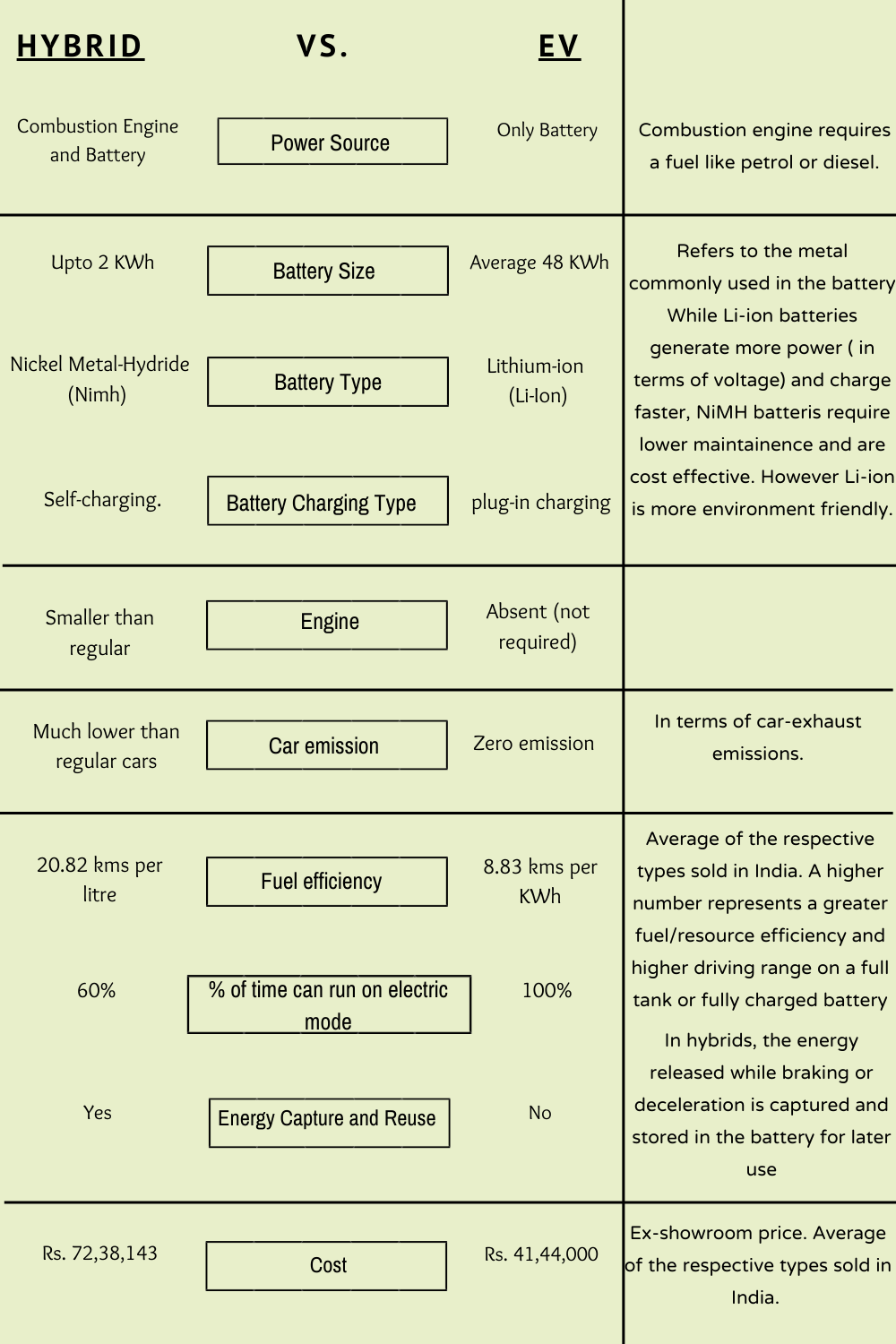You must be familiar with EVs (electric vehicles) by now, they had recently become talk of the town. If not, a quick recap for you – rising fuel prices, changing consumer sentiments and the Government’s push towards reduced vehicle emissions had companies like Ola and Tata Motors and brands like Hero and Okinawa sell two and four-wheeler EVs in thousands of units during the financial year 2021-22. Tata Power signed a Memorandum of Understanding to install 5,000 EV chargers across various states. In the capital markets, there was excitement around the EV stocks. There were also incidents of these scooters and cars catching fires that forced some companies to recall their products from the market.
These were the pure electric vehicles. Another variation in this industry are the hybrids. These use the power of both, a regular combustion engine and an electric motor charged by a battery. EVs and Hybrids both reduce emissions produced by cars due to their reduced fuel usage as compared to regular cars. The debate, however, is which one does this more efficiently? We’ll give you this table** which summarises their differences at a glance.

Well, we may be tempted to choose EVs over hybrids because technically, their car exhaust emissions are zero. No carbon dioxide released. In a split second, we’d choose EVs too. They have no engine, they require no fuel. So no fossil fuels burned, right?.
Actually it’s not that simple. On a broader perspective, we can assess this over two areas:-
- Battery Size and Resource Use:- From the table above you can see that the battery size in electric vehicles is much larger than in hybrids, which means more of the metal Lithium needs to be used. Lithium is used in almost every electronic good. The demand is too high and the supply slow. While the metal itself is abundant, the problem lies in its extraction- it requires just too much water. A research was conducted to determine whether the amount of this supply-constrained resource used in a particular model is justified by the amount of C02 reduced from that model. The result- hybrids proved to be a more efficient method of reducing CO2 per unit of battery size applied.
- Electricity Production:- In India there aren’t as many charging stations yet, so we will have to spend more and use more resources in installing these nationwide. This would mean a sharp increase in demand for electricity. One should know, currently India is largely a coal-based electricity producer and coal is a heavy polluter. The amount of CO2 released in the environment during this process might just as well offset any benefits received from zero car exhaust emissions. Surely, we are continuously striving to achieve a greater share of electricity from renewable sources (mainly solar) but renewable sources are just not enough to supply such a rise in demand, and they come with their own constraints. Our target to make 80 per cent of two and three-wheelers, 40 per cent of buses, and 30 to 70 percent of cars electric vehicles by 2030 is bold, but will it really help achieve the ‘Zero-emission 2070’ dream if we continue to depend on coal to supply electricity for these? Our article on ‘Coal project in Hasdeo Aranya’ points out how spikes in demand makes the industry turn first towards coal mining, which leaves more luscious forests like these in grave danger.
Seeing things through a wider lens, EVs aren’t really that Green. Not as of now at least. Talks of newer technologies like the hydrogen fuel cell for use in batteries have begun but that is a discussion for another day.
This was our perspective. What’s your argument as to which is better? Let us know in the comments.
Editor’s note : It’s 2025 now and there are much cheaper options for EVs available. With advancements in the industry, we might be able to deal with the issues listed here.






4 Responses
I loved this article !!
Very informative article!
It is important that people know about eco- impact of EV vehicles.
Public transport, ride sharing or bicycles should be the way forward.
Yes indeed
Reblogged this on MyBigShort.com.